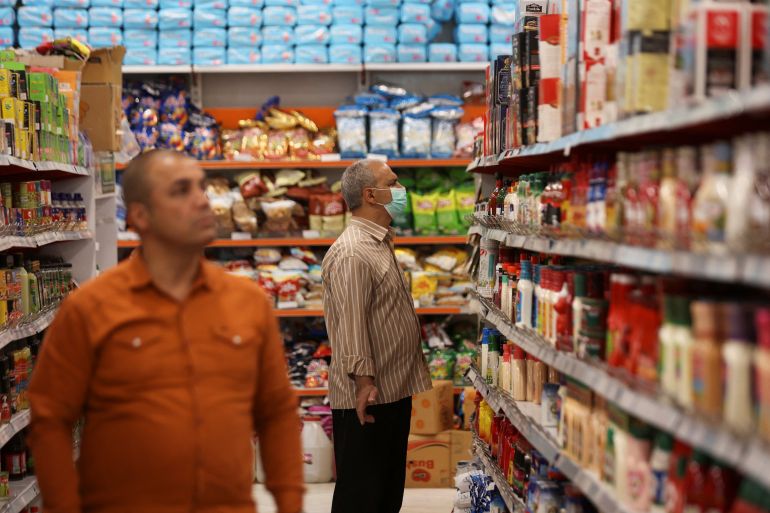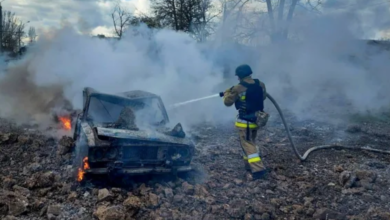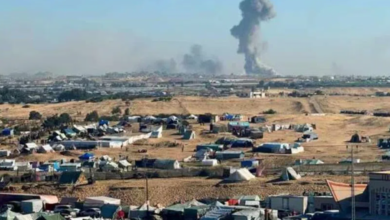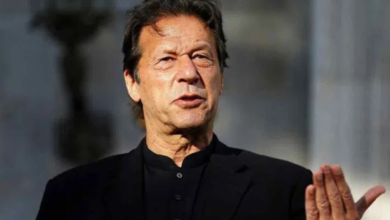Free-falling rial leaves Iranians worried about financial future

Currency depreciation and high inflation show few signs of coming down, forcing many Iranians to make fewer purchases.

Tehran, Iran – People out shopping for groceries are double-checking prices, comparing between shops, and sometimes having to choose what they are going to have to do without this week.
It is a process that has been going on for months as the prices of basic goods rise and the rial, Iran’s currency, continues its nosedive. And people are worried.
“I work over 12 hours a day driving around town in this insane traffic,” said a 60-year-old taxi driver, Gholamali, who works in Tehran but lives in nearby Karaj and asked for his last name to be withheld.
“At the end of the day, I call my wife to see what we need for the house. I check the prices of everything at the grocery store to work out how much I can afford to buy. I see young couples doing the same. This isn’t normal, but this is how one day you’re thinking to yourself and you see something horrible has become your new normal.”
Food costs up by 70 percent
Food items are bearing the brunt of the inflation, with a basket of items selected by the Statistical Centre of Iran increasing 70 percent compared with the same month of last year.
Meanwhile, essential and commonly used items like onions and red meat have been consistently making headlines in local media during the past month for prices that, at intervals, have up to tripled before marginally pulling back.
The exchange rate of the rial surpassed the important psychological barrier of 500,000 to the United States dollar in the open market on February 20.
And then, in only a week, the ailing currency dropped to more than 600,000 against the greenback, before regaining some ground this week.
Iran has also faced months of unrest as nationwide protests dominated international headlines, Iranian tensions with the West rose due to claims Tehran provided Russia with drones and confrontations with Israel became increasingly public.
For decades, Iran has battled similar issues which have worsened since 2018, when the US unilaterally withdrew from the nuclear deal with world powers and imposed harsh sanctions on the country that, two years later, became the hardest hit by the COVID-19 pandemic in the region.
Before the start of the protests in September, each dollar fetched about 300,000 rials in the open market. Before the US pulled out from the nuclear deal, it was less than 40,000.
But the depreciation of the rial has only been playing catchup with Iran’s untamed inflation, which stood at more than 53 percent on February 19, according to the latest report by the Statistical Centre of Iran.
‘Nothing but implosion at the end’
Babak, a 32-year-old who runs a small café in northern Tehran, said inflation was also hurting small businesses and suppliers.
“We just had a 30 percent price jump a few months ago. Now with the new dollar rate I can only imagine how hard the next one is going to hit when my coffee beans supplier brings in the next shipment,” he told Al Jazeera.
“If it keeps going like this it will lead to nothing but bankruptcy. It’s constant pressure, and there’s nothing but implosion at the end.”
Iran is heading for the Nowruz or new year holidays, a season when prices traditionally increase anyway. To fight this, officials have promised to crack down on unauthorised price hikes and have started distributing goods like frozen meat at lower prices.
In response to the falling currency, the central bank last week launched a new centre for exchanging currency and gold to closely monitor all transactions, including money coming in from exports by big companies.
However, at the centre’s current rate of less than 440,000 rials to the dollar for cash and just over 380,000 for foreign currency payment orders, the rates are far below the open market.
The bank has also promised to keep an artificially low rate of 285,000 to the dollar for imports of a number of essential goods.
Effect of government policy
Like many economists, Sadegh Alhosseini believes that an unchecked and constant increase in the country’s money supply on the back of its perennial budget deficits is the main factor behind its runaway inflation.
But the current levels of money supply – now about 40 percent higher than last year – only explain currency devaluation up to a point, with the rest being accounted for by a mix of tensions in foreign policy and mismanagement in the local economy, he told Al Jazeera.
“Risks following the Ukraine war, news on confrontations with Israel and a deadlock on the nuclear deal all increase demand for holding dollars or dollar-based commodities, and ditching rials,” Alhosseini said, adding that recent US pressure on neighbours Iraq and the United Arab Emirates to choke Tehran’s foreign currency streams is adding significant strain.
But the economist believes measures carried out by the Iranian authorities have only exacerbated the problems and have contributed to the recent freefall of the rial.
For one, Alhosseini said, the artificial 285,000 rials rate for the dollar is a reiteration of failed past policies that breed corruption while forcing exporters to repatriate all of their foreign currency earnings at a low rate deters exports and deprives the local market of desperately needed cash.
“There is corruption in the middle management body of our political system, and some of the same people who will be distributing this cheap currency and benefitting from it advocate for these policies, while some of our senior management lack the necessary know-how and experience,” Alhosseini said.
“In the short term, if the government lets go of or reduces its artificial rate and currency repatriation policies, and intervenes in the market only at rates consistent with open market rates, it would strengthen the rial.”







